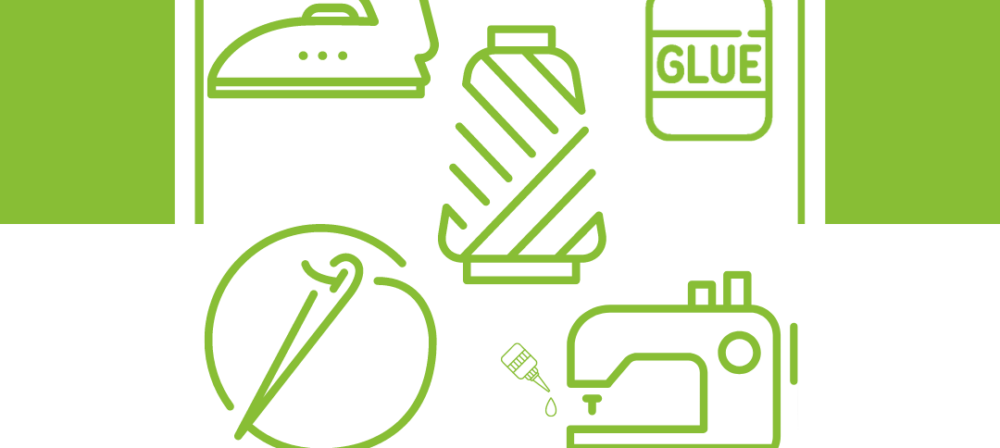Embroidered Badges and Patches are all the rage right now. You can apply these badges to t-shirts, jackets, bags and even shoes! This blog will explain applying a patch to your garments and accessories.
It’s well known to garment manufacturers and designers that there are more than a few ways to attach a patch; however, some techniques are better suited to your needs than others. At Embroidery Badge, we help you find the best way to get the most out of your patch.
Over the years, the classic embroidered badge has given way to more revolutionary and artistic methods of creating patches. And these include:
- Woven badges
- Appliqué badges
- Sublimation badges
- Chenille badges
You can also get a combination of two or more different types.
Now that we have laid out the different types take a look at the 5 ways that you can apply a badge to your favourite fabric:
Heat Seal Machine/ Iron

The world of fashion is forever changing. From extravagant and innovative designs to minimalistic ones, badges are everywhere.
Brands like Gucci have made extensive and unique animal prints infamous, and several other big brands follow in their footsteps.
Heat Seal Backing is when we coat the back of the badge in a sealant—and ensure that the badge holds its shape and glues securely onto the fabric when heat is applied.
Pros:
- Easy to attach using any heat-sustainable surface.
- Convenient to order in bulk for small top-ups.
- No seams or harsh lines around the design.
- No sewing is required.
Cons:
- Some garments/caps need specialized heat press equipment.
- Not suitable for nylon or garments with any coating.
- Not as durable as sewing.
- It could come off if washed or used a lot.
Sewing

This method has been around since the inception of embroidery. It is, to date, the most durable technique for applying a badge. Small one-off quantities can be hand-stitched using a simple thread and needle; your local seamstress can stitch larger quantities. And for professional embellishment, please see “applique embroidery” later in the blog.
Although it’s a traditional method, using unconventional colour schemes or contrasting threads can further lift the look of your sew on patches.
You can even make it invisible! All you have to do is add an embroidered or overlocked edge to your badge and sew around it in the application stage to make sure your badge is permanently attached. It’s a good method to attach a badge.
Pros of using sew on patches:
- Very durable.
- An invisible application process is possible.
- Small quantities can be hand-stitched.
Cons of using sew on patches:
- Time-consuming.
- Traditional look.
- You would have to pay someone else to do large quantities.
Sew and Seal
The most time-consuming yet effective way is to combine heat sealing and sewing. The heat application helps the badge keep its shape, structure, and consistency. And the sewing extends the application’s life while adding another unique feature to your branding.
Pros:
- Very durable.
- Keeps badge shape & structure.
- Extends the life of the badge even with excess washing and usage.
Cons:
- Time-consuming.
- Not optimal for large quantities of badges.
Applique Embroidery Sewing

Using an embroidery sewing machine, your badge application will have an extremely professional finish as if it’s part of the fabric. 99% of the woven logos you see on team sports jerseys use this method. So sports and performance wear companies mainly use this method.
Pros of Applique:
- Very durable.
- We provide an outline DST stitch file that lines up your badge perfectly on the embroidery machine.
Cons of Applique:
- Must have appropriate machinery.
Glue

Popular with woven badges and temporary badge applications, the method puts a complete DIY spin on badge application by giving the end consumer the option of applying it as and when desired.
With a peel-off sticker backing, it’s flexible and attached easily. The glue is used for events and promotions where all the staff can wear tops of the same colour, and everything looks uniform once the badge is applied.
Pros
- Very easy to apply.
- Apply it to any garment!
- Easily removed.
Cons
- Not durable.
- A temporary option.
So now that we have discussed the 5 ways you can apply badges, it’s time for you to choose. Every application process works for a different situation, depending on your badge’s use and lifecycle, whether heat seal, applique or sewing works.
Contact us for a free badge quote, and start creating custom badges to attach immediately!

